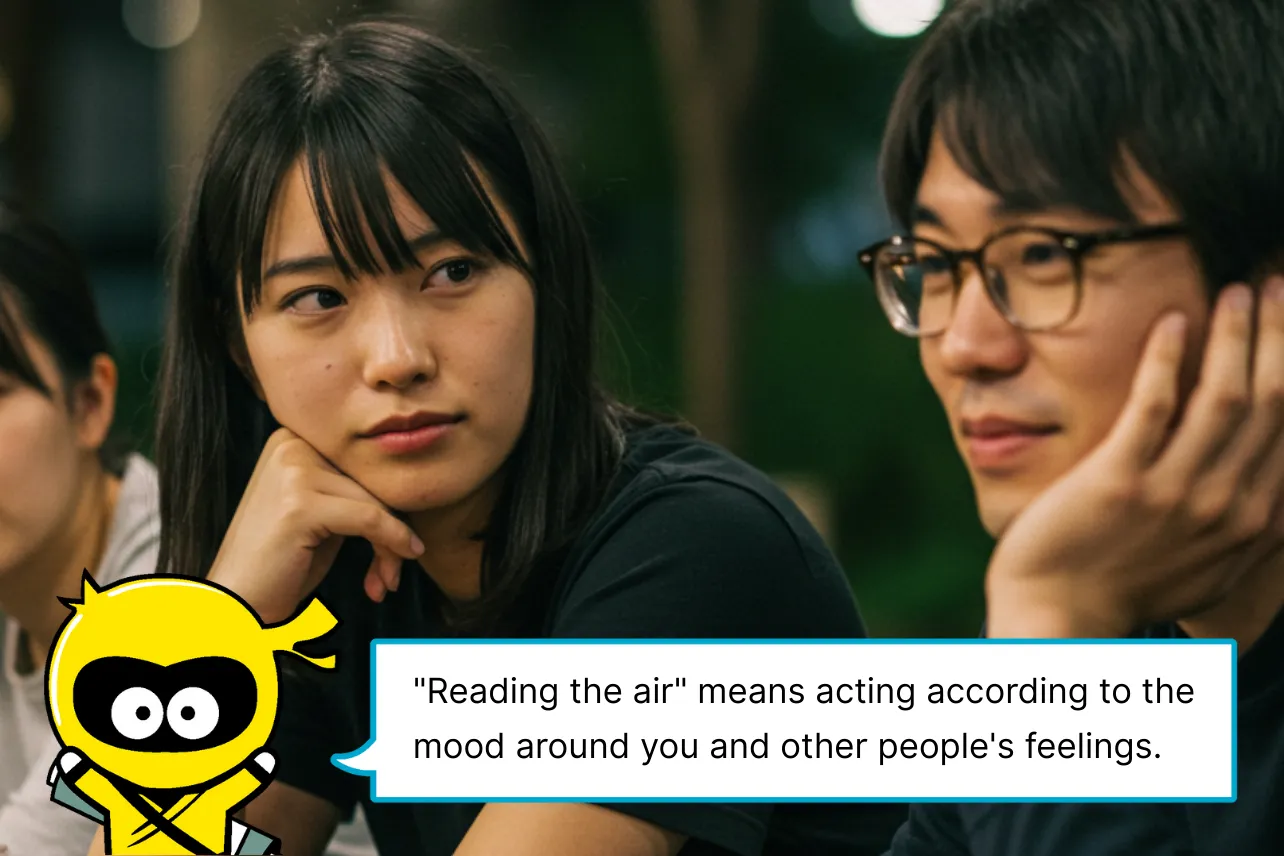

What Does “Reading the Air” Mean? Its Role in Japanese Culture


“Reading the air” refers to sensing unspoken intentions and the atmosphere of a situation, then acting accordingly. In Japan, it is valued as a way to avoid conflict and maintain harmony. Requests or refusals are often delivered gently, with the aim of preserving the other person’s dignity. Understanding the Japanese “reading the air” culture can make both daily life and business interactions smoother.
Why Do Japanese People Value Reading the Air Over Words?
The tendency to value atmosphere over words is rooted in a cultural emphasis on group cooperation and avoiding conflict. Rather than making direct statements, people often consider the other person’s position and emotions, then seek common ground. This Japanese “reading the air” culture is a key communication skill for maintaining long-term, stable relationships.
The Historical Roots of Japan’s “Reading the Air” Culture
The roots of Japan’s reading-the-air culture lie in cooperative rice farming, the philosophy of “wa” (harmony), and influences from Confucianism and Buddhism. Respecting hierarchies, knowing one’s role, and avoiding disruption have long been considered virtues. This historical background nurtured the habit of noticing unspoken cues and subtle nuances, which remains ingrained in Japanese society today.
Examples of Reading the Air in Daily Life


This cultural practice appears not only in formal ceremonies or meetings but also in small, everyday actions. Understanding these manners can help reduce confusion during travel or daily life in Japan, and foster comfortable relationships with those around you. For visitors, these habits are essential for smooth interactions.
- Stay quiet on trains and avoid phone calls
- Line up calmly and avoid cutting in
- Speak softly in stores and give a polite nod to staff
- Keep shared spaces clean and be mindful of noise and smells
- Acknowledge seniors or superiors first in toasts and greetings
Reading the Air in the Workplace and Business
In professional settings, Japan’s reading-the-air culture can directly influence outcomes and reputation. Accurately recognizing unspoken cues and priorities is essential for avoiding misunderstandings and building trust. From meeting etiquette and seating arrangements to email tone and business card exchanges, attention to detail is key to success.
- Silence in meetings often signals “thinking,” not disagreement
- Respect speaking order and seating hierarchy (upper/lower seats)
- Share not only conclusions but also the reasoning behind them
- Adjust formality in emails and greetings according to the relationship
Tips for Reading the Air in Conversation
In Japan, nonverbal cues—facial expressions, pauses, and tone—often carry more meaning than the words themselves. Ambiguous expressions may reflect politeness or restraint, so confirming your understanding when necessary helps build trust. For foreigners, this awareness is crucial for smooth communication.
- Use aizuchi (short responses like “yes” or “I see”) to show understanding
- Use softening phrases such as “if possible”
- Don’t interrupt silences; wait for the other person to speak
- Repeat key points to confirm mutual understanding
Situations Foreigners Often Misinterpret
Japanese people often avoid saying “no” directly, using indirect expressions instead. Taking these literally can lead to misunderstandings. Foreigners should consider context and tone to grasp the intended meaning. Understanding these phrases can help maintain smooth relationships.
- “We’ll consider it” = may indicate rejection rather than approval
- “It’s fine” = could mean refusal or polite decline
- “Maybe next time” = may be a polite brush-off if no date is set
- “It might be difficult” = often a near-certain “no”
Advantages and Disadvantages of Reading the Air
Japan’s reading-the-air culture has clear advantages, such as avoiding conflict and smoothing relationships, but also drawbacks, such as delaying decisions or obscuring intentions. The key is to balance when to read the air and when to speak directly, making both daily life and business more effective.
- Advantage: Avoids conflict and smooths relationships
- Advantage: Reduces burdens on others and encourages cooperation
- Disadvantage: True intentions may not be conveyed, causing delays
- Disadvantage: Can appear unclear or unfair
Differences Between Japanese and Foreign Communication Styles
Japan’s reading-the-air culture is a prime example of a “high-context culture,” where more shared background leads to less direct speech. In contrast, many Western cultures are “low-context,” valuing clarity and explicit communication. Understanding these differences can significantly reduce cross-cultural misunderstandings.
- Japan: Values unspoken cues and shared context
- Western cultures: Value clear words and explicit agreements
- Japan: Takes time to reach group consensus
- Western cultures: Present conclusions and actions upfront
You might be interested in this
How to Adapt to Japan’s Reading-the-Air Culture
Adapt gradually by following a cycle of observation, confirmation, and adjustment. First, observe the pace, tone, and personal space of those around you. If unsure, politely confirm your understanding. Then adjust your behavior accordingly. This approach builds trust without aiming for perfection, and is essential for foreigners seeking to build strong relationships in Japan.
- Observe speed, volume, and distance in interactions
- Ask “Is my understanding correct?” if unsure
- Show engagement with nods and eye contact
- Share meeting notes afterward to confirm agreements




